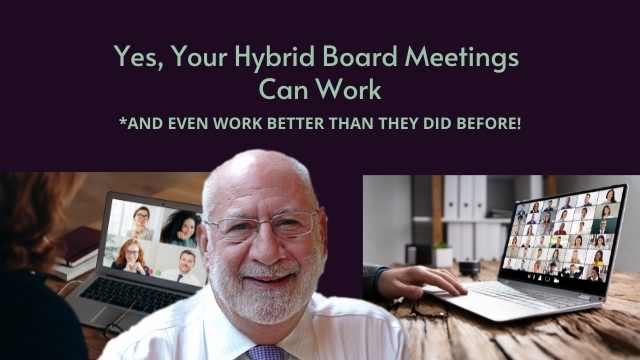In 2020, when COVID-19 created barriers to meeting in person, we knew how our clients did business would have to change.
With over 40 years of experience operating virtually, I wasn’t overly concerned about the communication between the TI consultants. But I did wonder about how we could continue to deliver high-quality, meaningful experiences for our strategic planning clients.
How could a virtual solution, using something like Zoom, possibly work as well as sitting in a room together to talk about the tough stuff?
But after accruing many real-life case studies with testimonials to back it up, we’ve tested and improved upon our methods. We can tell you what works (and what doesn’t) for operating virtually. Our clients report high levels of satisfaction with board, committee meetings, and assembly experience from both virtual and on-site attendees.
This was no small feat, though anyone can do it. But you have to get your strategy right.
Structure, Process, and Culture
Our client groups use their synchronous time together efficiently.
We make sure Board meetings focus on strategic issues and decision-making.
The committee and workgroup meetings are for developing and examining ideas and then assessing consensus and/or consent.
We learned early on that some of the different tech tools available to us were too complicated or cumbersome for all of our clients. While many tools offer visually elegant bells and whistles when under the control of an experienced, tech-savvy user, we needed smart tools that any person could begin using without training or demos.
That’s why we use an AI-supported online platform specifically designed for group work and decision-making to provide a similar experience for all participants regardless of their location or experience.
Engagement of groups from 5 to 100 involves robust conversation, shared background information, moderation of the dialogue, and documentation of thinking and determinations. We include that in how we build out our online workspaces for both asynchronous and synchronous group work.
How do we determine which parts of the engagement are in-person, synchronous virtual, or asynchronous virtual? By the number of virtual participants.
Continuous Improvement
In lean startup methodology, you look to improve through an iterative process. Our team continues to learn and share with each other new discoveries for how to improve on these meetings. For example, just today, several consultants discussed over email how nonverbal cues to speak could be handled better, building in a more efficient and less awkward way for participants to engage at key points in virtual meetings. With an eye toward empathy, psychology, and adult learning behavior; we are actively working on ways to help teams function better together. This is exciting work!
The unexpected rewards of learning how to augment this collaborative decision-making process with technology and asynchronous communication opportunities include things like:
- Better support for DEI commitments
- Active engagement in interactive work in both small and large groups
- Diminishing “Zoom fatigue” and an overall feeling of mission ennui
Technology makes new methods and tools for productive and enjoyable collaboration possible. If we can get out of our own way of only thinking about the traditional methods for helping people solve problems together and start looking at ways to use the COVID-19 challenges as a way to innovate for even better methods, we’ll all be happier for it.
Through our consultancy’s experience, we see a way to support our work in structure, process, and culture in a diverse, equitable, and inclusive hybrid environment.
At Tecker International, we always share our knowledge. You can also learn more about the platform we work with and lessons we’ve learned in “Adventures in Leadership, Learning – There has gotta be a better way”. I am happy to share additional details about our methods for successful hybrid meetings and answer any other questions. Please reach out via info@tecker.com.


